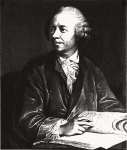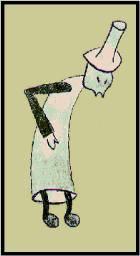Starting point for my work are the 17 types of plane symmetry:
17 ways to arrange a motif regularly in the plane (Wikipedia gives a beautiful
description under the label 'wallpaper groups'). These repetitive patters have fascinated people from the beginning of mankind.
Already the egyptian craftsmen of the days of the great Pharaohs were masters in playing with the symmetry constraints
inherent in each of these 'seventeen'. This fascination to 'make art' out of the constraints of plane symmetries reached its peak in
medieval Islamic decoration art, with the Alhambra in Granada as one of its most illustrious examples.
In the footsteps of these distant ancestors my whole life already I am obsessed by a monomanic interest in those 17 plane symmetries: How can beauty be elicited from them?
Through the years I developed a method in which I could evoke Christoffel sequences within these plane symmetries, resulting in quite
wonderful geometrical shapes. I developed two approaches: one resulting in layered spirals and one resulting in layered crystals (snowflakes).
The complexity and beauty of shape and color which can be realized within each of these two appoaches suprises me over and over again.
The phenomenon of Christoffel sequences, the two methods for pattern generation and the way in which Christoffel sequences manifest themselves
within those patterns, all are explained in the paper which you can find under the 'Euler knob' at the end of this site.
The gallery below shows some nice results for each of the two approaches.
|
spirals
crystals

